On arrival into Johannesburg OR Tambo International Airport, disembark, collect your luggage, clear customs and make your way to Terminal B to check in for your onward flight to Cape Town.
At Cape Town Airport, collect your luggage and proceed to the arrivals hall where you will be greeted by a private driver who will transfer you to your central boutique hotel located in the V&A Waterfront area.
Enjoy four nights at Victoria & Alfred Hotel in a Piazza Room inclusive of breakfast.
These days are at leisure to explore sights, sounds and tastes of the 'Mother City'.
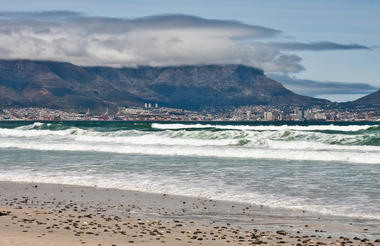


Following breakfast this morning, you will be met by your guide to embark on a private winelands tour enroute to your accommodation in the heart of Franschhoek Valley.
Tonight enjoy your accommodation at the five star Franschhoek Country House and VIllas in a luxury room inclusive of breakfast.
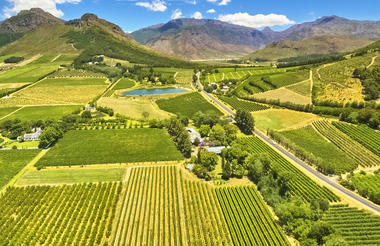


Private Winelands Tour
You will be met this morning by your guide and will set off for the Winelands, a delightful drive which winds its way through superb mountain ranges, vineyards and Cape Dutch homesteads. The first stop is Stellenbosch, the second oldest town in South Africa, with canal-lined avenues, and magnificent examples of Cape Dutch architecture where you can do wine tasting, coupled with a chocolate and dessert tasting. Onward over the scenic Helshoogte Pass, to Franschhoek, founded by French Huguenots over 350 years ago, and widely regarded as the culinary capital of South Africa. Its beautiful setting and café lined streets will charm you and a further wine tasting is included at one of the renowned estates here. Your final stop is at the town of Paarl, at the foot of a cluster of remarkable granite domes where you enjoy your final wine tasting before heading to your Franschhoek accommodation.
Following a delicious breakfast this morning, you will be met by your driver who will transfer you by road to Cape Town International Airport in time to board your onward Kenya Airways flight to Victoria Falls.
On arrival into Victoria Falls Airport, disembark, collect your luggage, clear customs and proceed to arrivals hall. Here you will be warmly greeted by your private driver who will transfer you on to your boutique hotel in Victoria Falls.
Experience two nights at Ilala Lodge in a Double Deluxe Room including daily breakfast.
These days are spent at leisure visiting The Falls and exploring the variety of activities available in the area.

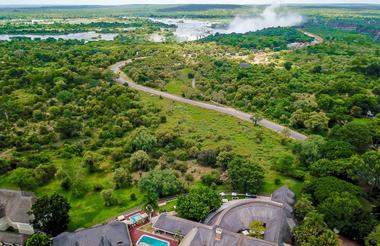

Downgrade option: Two nights at Ilala Lodge in a deluxe room inclusive of breakfast would reduce the overall cost by AUD2,400.
Following breakfast and a morning activity, you will be met by your driver and transferred back across the border into Zimbabwe to Victoria Falls Airport in time for your onward flight to Nairobi.
On arrival into Nairobi Jomo Kenyatta International Airport, disembark, clear customs, collect luggage and proceed outside the airport to curbside collection. Here you will be met by a hotel driver who will transfer you a short distance to your airport hotel.
This evening is at Lazizi Premier Hotel in a standard room inclusive of breakfast.
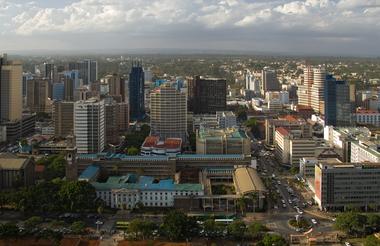
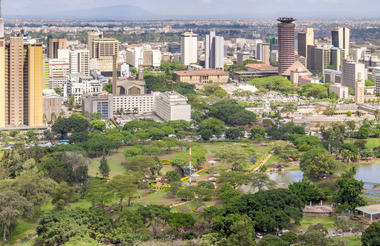
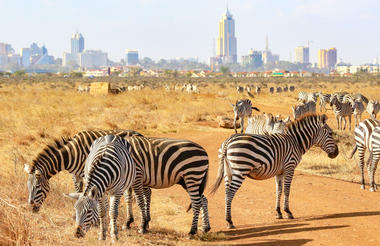
After an early breakfast this morning, meet a hotel driver who will transfer you a short distance to Jomo Kenyatta International Airport in time for your onward flight to Kilimanjaro.
Welcome to Kilimanjaro and the start of your Tanzania Honeymoon Adventures.
On arrival into Kilimanjaro Airport, clear customs, collect luggage and make your way to the arrivals hall. Here you will be warmly greeted by a private driver who will transfer you by road to your Arusha accommodation.
Tonight is spent relaxing after a long flight at Rivertrees Country Inn in a Garden Room with breakfast and dinner included.
The rest of this evening is at leisure to rest and recover from your long haul international flight.

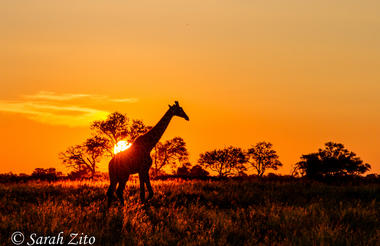

This morning after a delicious breakfast, you will be warmly met at your lodge by your private guide and driver. Your guide will look after you until you reach Serengeti. Your guide will assist you with your luggage as you load into your private 4wd and start your 3 hour journey to Lake Manyara passing through Makuyuni and Mto wa Mbu Villages as well as farmland. A picnic lunch will be enjoyed at a scenic spot enroute.
The next two nights are experienced amidst the tree canopies at the unique and luxurious Lake Manyara Tree Lodge. This is the only permanent lodge in Lake Manyara and designed to exert minimal impact on the environment. Strategically located in the Southern region of the park away from the crowds. Your stay is inclusive of all meals, drinks and laundry.
Spend the next few days enjoying morning and afternoon game activities with your guide in Lake Manyara National Park.
Please refer to the 'safari life' document for further guide of what to expect during your safari.
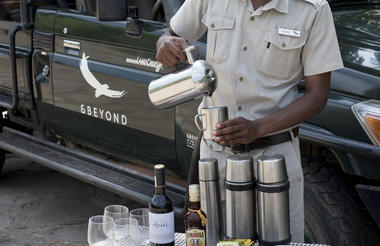





PRIVATE SAFARI - TANZANIA is the ultimate adventure for any couple, family or small group seeking a personal and unique safari experience in Northern Tanzania. From the moment you arrive, you're greeted with a warm smile by your very own private guide and travel in a custom built 4x4 for comfort and ultimate game viewing. Our hand picked safari guides ensure you experience what you came here for, be that landscapes, wildlife, culture or a combination of all three! It's the very best way to ensure quality time and an authentic experience together without worrying about other guests and set schedules. By day explore the wilderness in search of wildlife at your own pace. In the evenings, you arrive or return to camp where you have the opportunity to socialise with fellow guests, join them for dinner and share stories around the campfire. Your private Tanzania safari includes: Meet and greet on arrival at the airport, exclusive use of a custom built 4x4 vehicle complete with cooler box and cold water, the service of an experienced English speaking driver/guide during the safari sector, transfers as specified, game drives and crater tour as specified, all accommodation and meals as specified, park fees and government taxes.
Lake Manyara National Park
Lake Manyara National Park derived its name from a plant called Euphorbia tirucalli, known as Emanyara in Maasai Language. The Maasai used this plant to cover their bomas (hedge). The Park was gazetted as a National Park in 1960 and was declared as a Biosphere in 1981.
The entrance gate lies 11⁄2 hours (126km/80 miles) west of Arusha along a surfaced road, close to the ethnically diverse market town of Mto wa Mbu.
The park is perhaps most reknowned for its famous tree-climbing lions. You can see a variety of habitats and diverse animals and birds. Manyara provides the perfect introduction to Tanzania's birdlife. More than 400 species have been recorded, and even a first-time visitor to Africa might reasonably expect to observe 100 of these in one day. Highlights include thousands of pink-hued flamingos on their perpetual migration, as well as other large waterbirds such as pelicans, cormorants and storks.
Maasai Village Visit
This morning, after breakfast at your lodge, depart Lake Manyara for Ngorongoro Crater passing through the town of Karatu enroute.
Experience two nights at the opulent Ngorongoro Crater Lodge perched on the rim of Ngorongoro Crater providing guests stunning views into the massive majestic Caldera. Your stay is all inclusive of meals, drinks and laundry. The rest of this afternoon is at leisure or you may wish to join a guided nature walk around the Crater Rim (at an additional cost).



Ngorongoro Crater
The Ngorongoro Conservation Area is situated 180 km west of Arusha in the Crater Highlands area of Tanzania. The conservation area is 8,300 sq km and is administered by the Ngorongoro Conservation Area Authority, an arm of the Tanzanian government, and its boundaries follow the boundary of the Ngorongoro Division of Ngorongoro District.
The conservation area boasts a blend of landscapes, wildlife, people and archaeology. The volcanoes, grasslands, waterfalls and mountain forests are home to an abundance of animals and to the Maasai.
Ngorongoro Crater is one of the world's greatest natural spectacles; its magical setting and abundant wildlife never fail to enthral visitors. It borders the Serengeti National Park to the north and west.
The Ngorongoro Conservation Area, established in 1959, is a pioneering experiment in multiple land use. Here pastoralism, conservation and tourism co-exist in a carefully managed harmony. The centrepiece of the Ngorongoro Conservation Area is the breathtaking Ngorongoro Crater which is the world's largest intact volcanic caldera. The Crater floor is a natural sanctuary for thousands of animals and many species of insects and birds. Lush highlands surround the Crater, falling away to the tawny plains and alkaline lakes of the Great Rift Valley.
The four main archaelogical sites are: Oldupai Gorge (2 million to 17 000 years ago), Laetoli (3.6 to 2.8 million years ago), Ngorongoro Crater (various proto-historic sites) and Nasera Rock (30 000 BC and more recent).
The main route through Karatu town to Loduare Gate is a tarmac road. The roads and tracks throughout the NCA are not sealed, however most are all-weather roads except for a very few secondary tracks.
Optional Downgrade: A two night stay at Ngorongoro Serena Lodge inclusive of meals (no drinks or laundry) would reduce the overall cost by AUD3,000.
This morning descend into the crater for full day game viewing with picnic lunch. Enjoy your safari viewing spectacular concentration of wildlife including the Big 5.
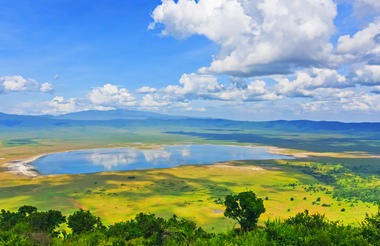
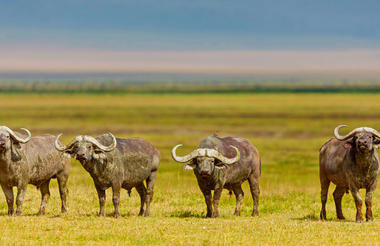
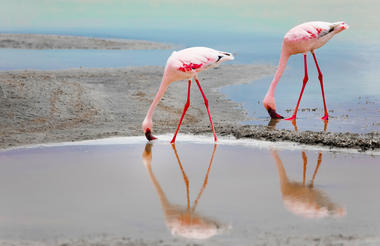
After breakfast this morning depart for the Serengeti National Park, famed for its annual migration, when some six million hooves pound the open plains, as more than 200,000 zebra and 300,000 Thomson's gazelle join the wildebeest's trek for fresh grazing. Yet even when the migration is quiet, the Serengeti offers arguably the most scintillating game viewing in Africa: great herds of buffalo, elephant and giraffe, and thousands upon thousands of eland, topi, kongoni, impala and Grant's gazelle. Golden maned lion prides feast on the abundance of plain grazers. Solitary leopards haunt the acacia trees lining the Seronera River, while a high density of cheetahs prowls the southeastern plains.
There is more to Serengeti than large mammals. There are over 500 species of birds, and your guide will also introduce you to the small five.
Enroute to Serengeti, you will drive through the Ngorongoro Conservation Area and visit Olduvai Gorge.
Farewell your private guide as he drops you at Namiri Plains. The next three nights are at the exclusive intimate Namiri Plains located in the 'Secret Serengeti' and overlooking the Serengeti plains. Your stay is inclusive of all meals, drinks and shared game drives in the game rich area featuring the highest density of cheetah in East Africa along with high numbers of lion and leopard. During May this camp is well positioned to access the vast herds of the annual Migration as they pass through.

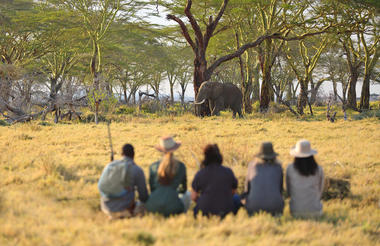

Olduvai Gorge
Olduvai Gorge or Oldupai Gorge in Tanzania is one of the most important paleoanthropological sites in the world and has been instrumental in furthering the understanding of early human evolution. This site was occupied by Homo habilis approximately 1.9 million years ago, Paranthropus boisei 1.8 million years ago, and Homo erectus 1.2 million years ago. Homo sapiens is dated to have occupied the site 17,000 years ago. Olduvai Gorge is a steep-sided ravine in the Great Rift Valley that stretches through eastern Africa. It is in the eastern Serengeti Plains in Arusha Region, Tanzania and is about 48 km (30 mi) long. It is located 45 km (28 mi) from the Laetoli archaeological site.
This site is significant in showing increased developmental and social complexities in hominins. Evidence of this is shown in the production and use of stone tools, which indicates the increase in cognitive capacities. Evidence also indicates the practices of both scavenging and hunting, which are highlighted by the evidence of gnaw marks predating cut marks, and comparisons on percentages of meat versus plant in the early hominid diet. Furthermore, the collection of tools and animal remains in a central area is evidence of increases in social interaction and communal activity.
Serengeti
The name Serengeti comes from the Maasai word Siringet referring to an endless plain. It was first inhabited by ancient hunter gatherers and pastoralists. The central Serengeti was declared a Game Reserve in 1929. In 1951, the Reserve became Tanganyika's first National Park which included the Ngorongoro Crater. Further alterations took place in 1959 in the Park, part of the Serengeti plains and the highlands were removed and added to the Ngorongoro Conservation area, while extensions to the north and south were included to provide more protection to the wildebeest migration. Covering 14,763 square kilometres, the Park is roughly the size of Northern Ireland making it Tanzania's largest national park.
The Seronera Valley is a transition zone between the southern plains and the northern woodlands. The most prominent is the Seronera River from which the area takes its name. With year - round water, this is the most reliable area to view wildlife. It is possible to see many of the Serengeti's resident wildlife including giraffe, buffalo, topi, hartebeest, waterbuck, impala, reedbuck, bushbuck, dikdik, hippopotamus, crocodile, warthog and diverse birdlife. Large prides of lion reside here, as well as clans of spotted hyena.
The Serengeti would not be the same without the beautiful rock outcrops known as kopjes. Also known as inselbergs, the intriguing rounded shapes of these ancient granite rocks are the result of cracking and erosion from exposure to sun, wind and rain. They provide shelter and capture water for a wealth of wildlife and plants. The main groups of kopjes are: Barafu, Gol, Maasai, Loliondo, Simba and Moru.
This morning after breakfast, game drive to Seronera Airstrip in time for your onward scheduled light air charter to Zanzibar.
On arrival into Zanzibar, disembark, collect your luggage and meet your private driver who will transfer you to your Stone Town accommodation, flanked by an exotic mix of sultan's palaces, Portugeuse forts, ancient dhow harbours and bright bazaars.
Tonight is spent at Zanzibar Serena Hotel, styled to represent a fusion of Swahili style and Arabic opulence, in a standard room inclusive of breakfast.
Your days here are at leisure to explore the UNESCO heritage site of Stone Town, including walking through a labyrinth of winding lanes, ancient stone houses, heavy carved wooden doors and visiting a selection of bazaars, spice markets and enjoying cultural sights including; Livingstone House, Hamamni Baths, National Museum, Jozani Forest and Mangapwani slave caves.
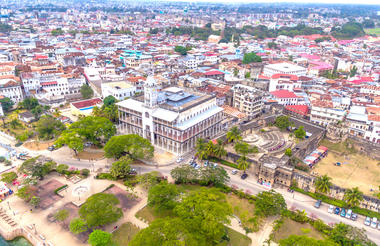

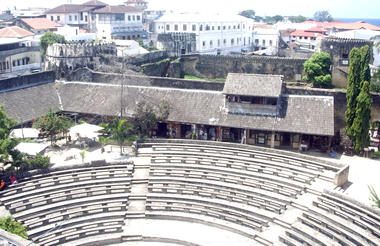
This morning after breakfast, you will be met at your hotel by your guide to embark on a half day tour of Stone Town.
Following your exploration of Stone Town, a guide driver will transfer you to your beach resort visiting Spice Plantations enroute to your accommodation.
Relax and enjoy the next four nights at Baraza Resort and Spa in a Garden Villa with all meals, drinks and non motorised activities.


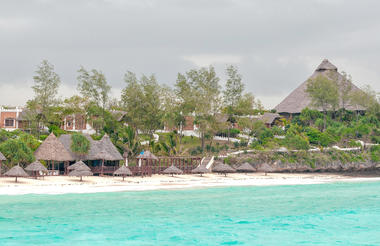
Historical Stone Town Tour
This begins with a visit to Zanzibar's colorful market. Alive with the buzz of locals bartering fresh vegetables and baskets of tropical fruit, amongst the heady smell of Jack fruit (amongst many other exotic fruits) we continue on to the site of a cathedral built in 1874. The cathedral signifies a potent time in Zanzibar's history and stands on the sight of a past slave market.Abolished in 1873 by decree of the Sultan of Zanzibar, the cathedral's high altar stands on the exact site of the whipping post that was in the market. From here we visit the residence of the late Sultan of Zanzibar, Tip Tip House', the Old Fort, Peoples Palace' and the House of Wonders', full of intrigue from days of long ago. The tour ends with a stroll down the narrow streets of the old stone town, the heart of Zanzibar's vivacious history.
Spice Tour
This is guaranteed to waken your senses. We visit spice plantations where you will have the opportunity to pick, smell & savour fruits & spices that you have probably never seen on the supermarket shelf. Commencing at the ruins of the Maruhubi Palace, via the site of David Livingston's house (one of Africa's greatest explorers) the journey continues north of town towards the Kidichi Persian Baths. From here we continue to the rural areas were local farmers live & produce some of the world's most exotic fruits and spices. Cloves, star fruit, bulls heart', tangerine trees, lemon grass, mangosteen and lip-stick trees to name but a few are what you can we expect to see - according to the seasons. Perhaps you will fancy buying a basket of freshly picked spices to take home with you.
After breakfast you will be met at your resort by a private driver who will transfer you to Zanzibar International Airport in time for your scheduled flight to Nairobi.
On arrival into Nairobi, disembark, and follow the transit signs to board your flight to Johannesburg.
At Johannesburg International Airport, disembark, clear customs and collect your luggage and proceed to check in and catch your international flight home.




